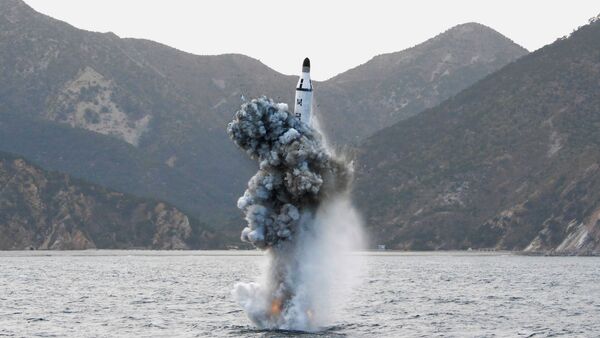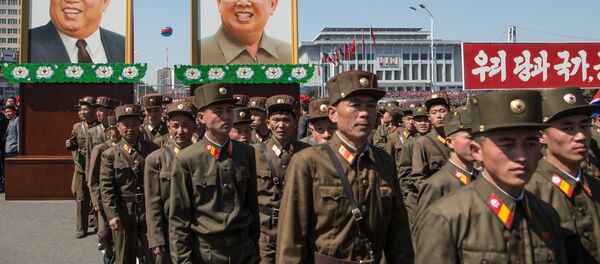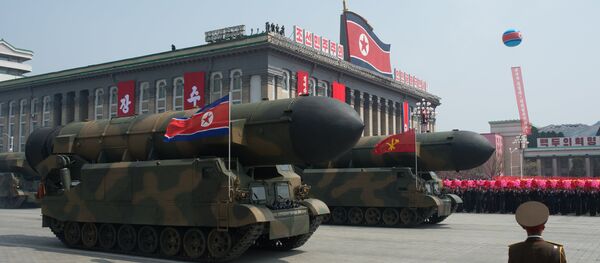"Rapid technological developments have taken place over a short period, resulting in significant progress towards an operational submarine-launched ballistic missile system, The Washington Free Beacon quoted the report as saying.
Photographs of the Gorae-class submarine, along with development details on the KN-11 or “Pukkuksong-1” submarine-launched missile, were also contained in the report.
A single launch tube on the Gorae submarine indicates that it is a prototype, and the report describes changes to the launch platform which addressed earlier issues with stability and ejection.
"To this end, vents were added on either side of the launch tube. These improvements are notable given that this vessel will likely serve as the basis for future submarine-launched ballistic missile submarines with multiple tubes," it reads.
Pyongyang conducted five KN-11 tests in 2016, with the report noting that "Four KN-11 tests occurred within five months from the Sinpo area, showing rapid development…The test of 24 August, by successfully going through ejection, boost and flight phases, was unprecedented in demonstrating the country’s capabilities with regard to submarine-launched ballistic missiles."
Naval experts were initially skeptical when word of Pyongyang’s development of a missile-firing submarine first arose in 2014, reasoning that the nation didn’t have the technological wherewithal for such complicated weapons development.
A facility in Sinpo, the site of Saturday’s failed missile test, also fielded land and ground tests when news of the submarine development first became public. Saturday’s test went awry when a liquid-fueled extended range Scud missile exploded shortly after taking off.
Tensions between Washington and the Democratic People’s Republic of Korea (DPRK) continue to intensify. On Monday, Vice Foreign Minister Han Song-ryo told the BBC that Pyongyang will be "conducting more missile tests on a weekly, monthly and yearly basis," adding that an "all-out war" would break out if the US tried to stage a military intervention.
On a visit to South Korea this week, US Vice President Mike Pence said when it came to Washington’s response to the North’s provocation, "all options are on the table," warning that "the era of strategic patience is over."
Air Force Gen. John Hyten, who heads Strategic Command, testified to the Senate Armed Services Committee in early April, that the DPRK was the "most dangerous and unpredictable" force in the region, though he doesn’t feel they pose a threat to the US.
He added, "Pyongyang’s evolving ballistic missile and nuclear weapons program underscore the growing threat … It continues to defy international norms and resolutions, as demonstrated by a number of provocative actions this past year, including their fourth and fifth nuclear tests," according to Air Force Magazine.





